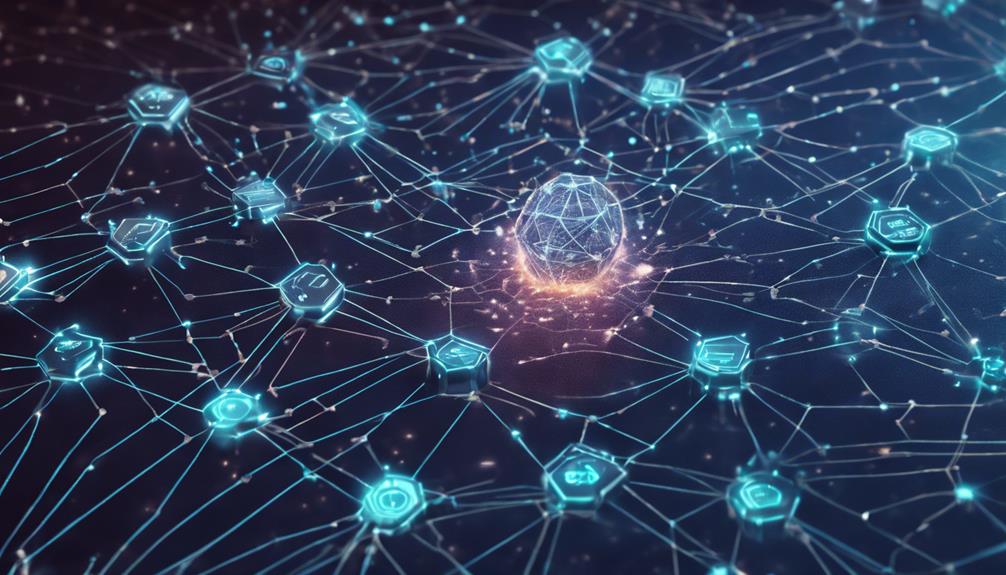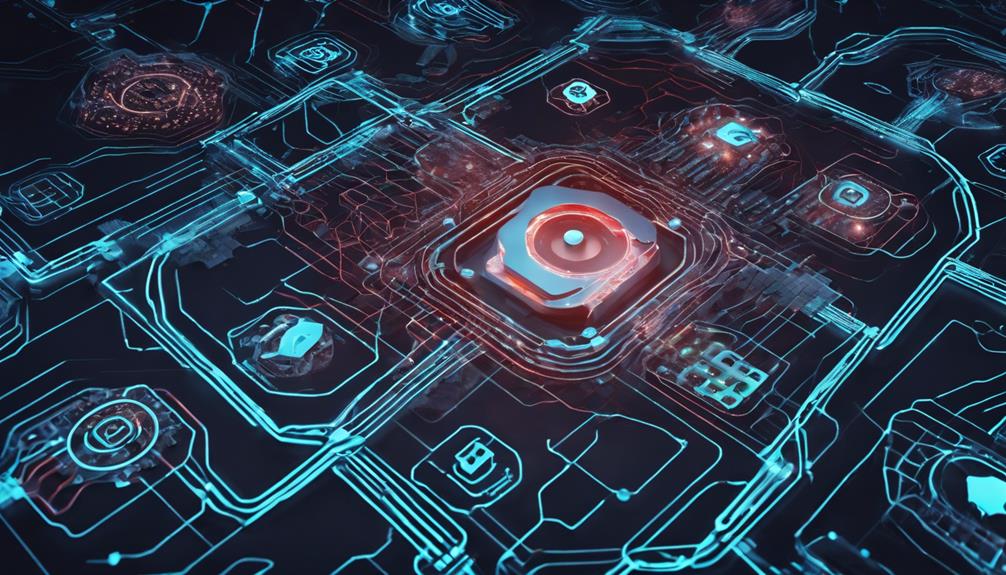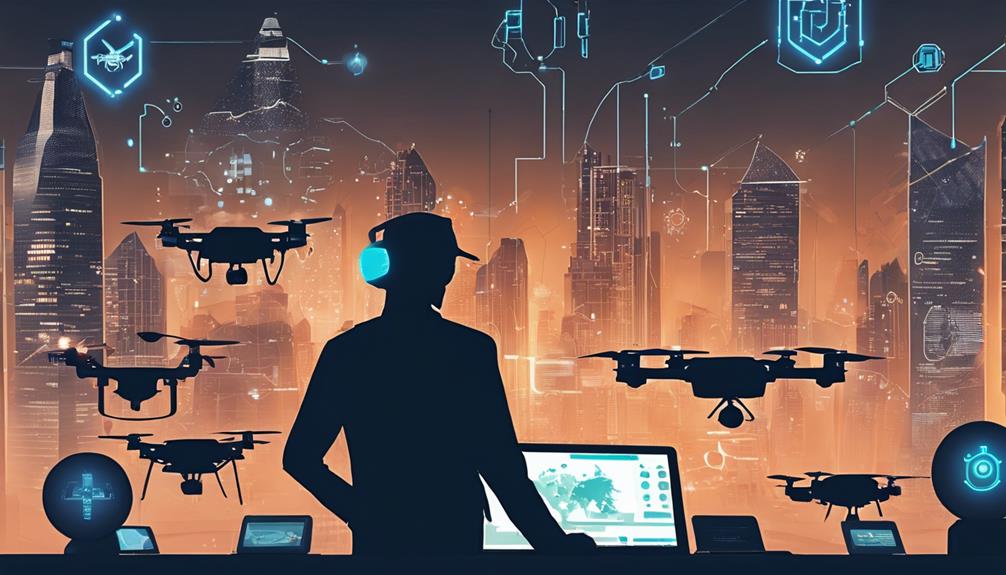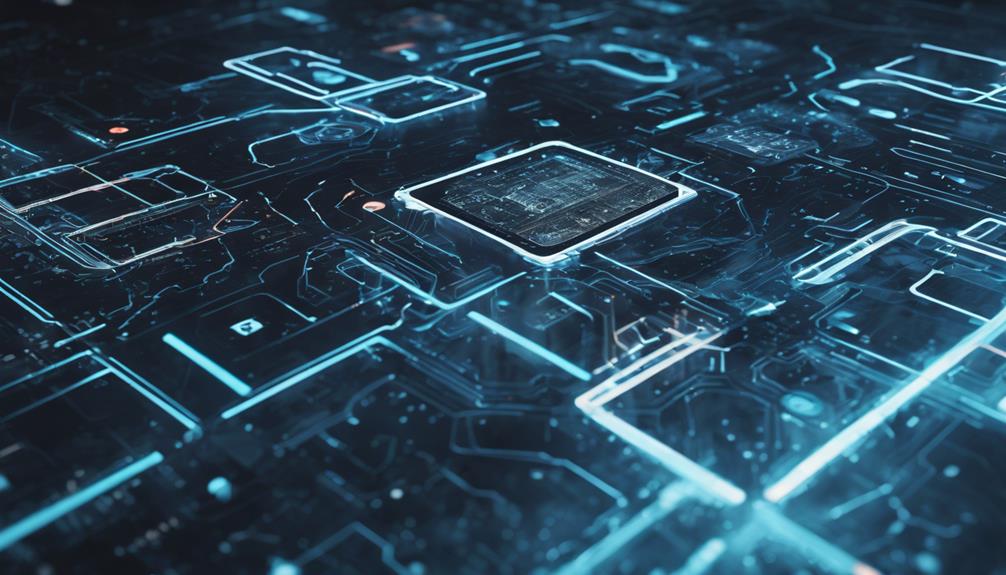Artificial intelligence in cybersecurity for 2023 is set to transform threat detection and response. Advancements include machine learning for hastened identification of threats, predictive analytics to preempt potential risks, and enhanced data analysis accuracy. Ransomware tactics are evolving, with a surge in attacks and refined social engineering methods. Integrating a Zero Trust Architecture will fortify cybersecurity resilience, especially amid rising third-party risks. AI-driven security solutions will bolster defenses against emerging threats. Embracing adaptive security measures and automation will be essential. Stay informed about these trends to stay ahead in safeguarding systems and data from cyber threats in the coming year.
Key Takeaways
- AI-powered threat detection for quicker response to malicious activities.
- Evolving ransomware tactics include phishing and Ransomware-as-a-Service models.
- Integration of Zero Trust Architecture for enhanced cybersecurity resilience.
- Rise of AI-driven security solutions for improved threat intelligence.
- Focus on automated incident response mechanisms for swift threat mitigation.
AI-Powered Threat Detection Advancements
With the rapid evolution of cybersecurity threats, AI-powered threat detection advancements have become essential for organizations to proactively safeguard their networks and data. Leveraging machine learning, these advancements enable quicker identification and response to malicious activities within networks.
By continuously analyzing vast amounts of data, AI algorithms enhance threat detection accuracy and reduce false positives substantially. The evolution of AI models in cybersecurity now allows for the prediction of potential threats based on historical data and behavioral analytics, providing a proactive approach to data protection.
AI-driven threat detection tools play an important role in helping organizations stay ahead of evolving threats in the cybersecurity landscape, ensuring the security of sensitive information. Implementing these advanced technologies not only strengthens defenses but also empowers organizations to detect and mitigate threats efficiently, ultimately enhancing overall cybersecurity posture and data security measures.
Evolving Ransomware Tactics

The evolution of ransomware tactics in 2023 demonstrates a significant shift towards more sophisticated and targeted approaches by cybercriminals. These evolving tactics are fueled by the growing threat landscape, with ransomware attacks increasing by 37% this year. Ransomware-as-a-Service (RaaS) models have made it easier for cybercriminals to access advanced attack tools, leading to an average ransom demand of $5.3 million. Social engineering techniques, including vishing attacks, are becoming more refined, allowing threat actors to deceive organizations and individuals effectively. Legacy architectures such as VPNs and firewalls are increasingly vulnerable, providing cybercriminals with more entry points for ransomware infiltration.
| Evolving Ransomware Tactics | ||
|---|---|---|
| Phishing Attacks | Ransomware-as-a-Service | Social Engineering |
| Legacy Architectures | Growing Threat Landscape | Vishing Attacks |
Integration of Zero Trust Architecture
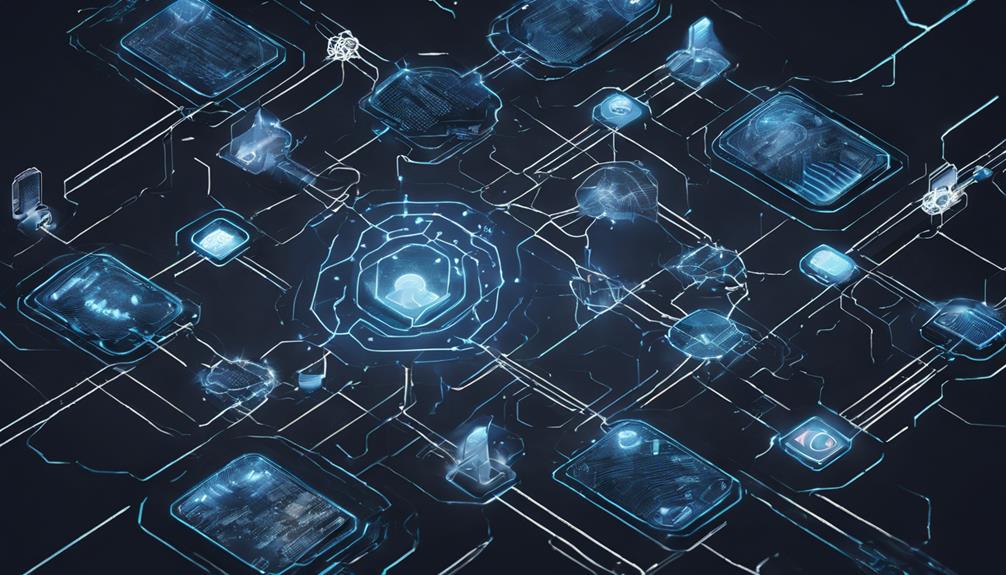
Embracing the integration of Zero Trust Architecture signifies a pivotal shift towards enhancing cybersecurity resilience in organizations amidst escalating threats. As nearly half of organizations have reported VPN-related attacks, the move to Zero Trust Architecture in 2023 has become a top priority to strengthen security measures.
By adopting Zero Trust principles such as continuous verification and minimal access rights, organizations can better address the challenges posed by legacy architectures like VPNs and firewalls, which can inadvertently expand attack surfaces.
Furthermore, the emphasis on mature third-party risk management programs aligns seamlessly with implementing Zero Trust Architecture for modern security strategies. This approach ensures that all entities accessing the network are subject to stringent authentication and verification processes, regardless of their location or origin.
Rise of AI-Driven Security Solutions
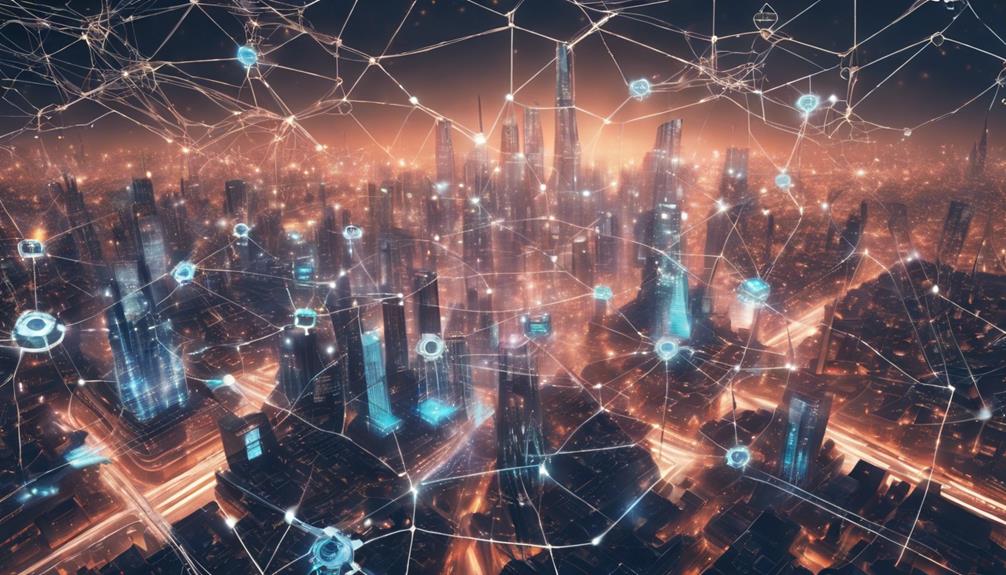
Amidst the evolving landscape of cybersecurity threats, the integration of AI-driven security solutions is poised to revolutionize organizations' defense mechanisms in 2023. AI tools are increasingly being leveraged to enhance threat detection and response capabilities, providing proactive security measures against a wide range of cyber threats.
These AI-powered security solutions offer real-time monitoring and automated incident response, enabling organizations to stay ahead of sophisticated attacks. By utilizing generative AI, organizations can bolster their cybersecurity posture by predicting potential threats and vulnerabilities before they materialize.
The adoption of AI in cybersecurity empowers organizations with the ability to proactively secure their digital assets and sensitive information. With the continuous advancements in AI technology, organizations can benefit from improved threat intelligence and faster response times to mitigate cyber risks effectively.
Embracing AI-driven security solutions is essential for organizations looking to strengthen their cyber defenses and safeguard against the ever-evolving threat landscape.
Addressing Third-Party Risk Challenges
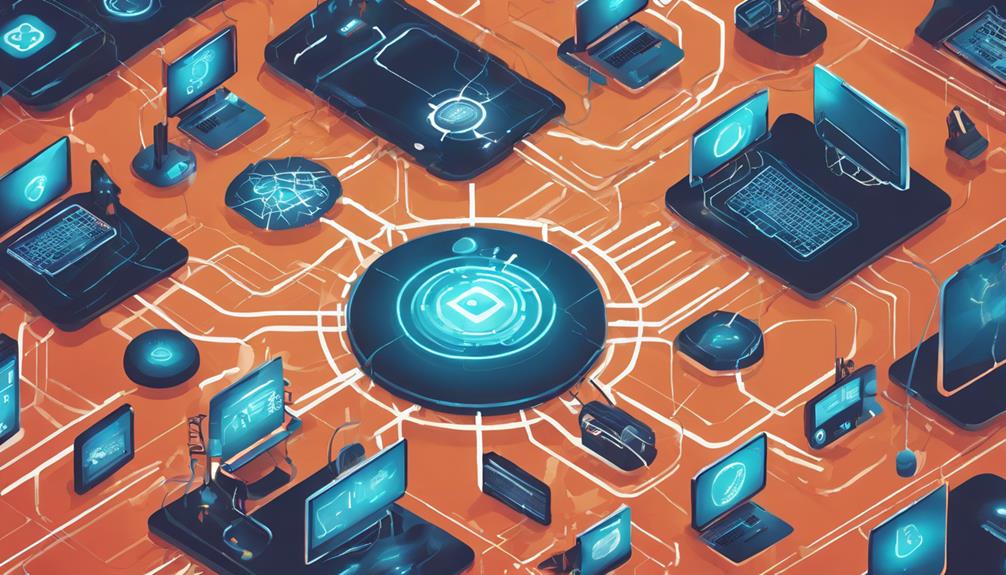
In confronting the escalating complexity of cybersecurity threats, organizations grapple with the formidable task of managing third-party risk challenges effectively. Nearly 60% of organizations encounter difficulties in handling third-party risks, leading to an average cost of $7.5 million per breach.
As 72% of organizations perceive an increase in third-party risks, cybersecurity teams are under mounting pressure to enhance their security posture. A key hurdle faced by these teams is the lack of visibility into third-party activities, hindering the ability to preempt and mitigate potential threats.
By implementing mature risk management strategies specific to third-party engagements, organizations can bolster their defenses and minimize vulnerabilities. Developing a detailed understanding of third-party risks is essential in fortifying cybersecurity defenses and safeguarding sensitive data.
Addressing these challenges head-on can greatly enhance an organization's security resilience and protect against the financial and reputational damage caused by third-party breaches.
Enhancing Data Protection Measures

In the field of cybersecurity, data breach prevention stands as a critical goal for organizations seeking to fortify their defenses.
The quest for enhanced threat detection accuracy drives the adoption of advanced security measures, ensuring swift identification and mitigation of potential risks.
Embracing adaptive security solutions becomes paramount in the ever-evolving landscape of cyber threats, empowering businesses to stay ahead and safeguard their valuable data.
Data Breach Prevention
To enhance data protection measures and prevent data breaches, organizations can implement a combination of encryption, access controls, security software updates, vulnerability assessments, employee training on cybersecurity best practices, AI-driven threat detection tools, and multi-factor authentication. Encryption and access controls alone can greatly reduce the likelihood of data breaches by up to 80%.
Regularly updating security software and conducting vulnerability assessments play an essential role in preventing 60% of data breaches. Training employees on cybersecurity best practices can decrease the risk by 50%.
Leveraging AI-driven threat detection tools enhances data breach prevention by detecting anomalies in real-time. Additionally, implementing multi-factor authentication can reduce the impact of data breaches by 70% by adding an extra layer of security.
Threat Detection Accuracy
Enhancing data protection measures through improved threat detection accuracy involves harnessing the power of AI technologies to analyze and interpret vast quantities of data. By leveraging AI security tools such as generative models and large language models (LLM), organizations can enhance their threat analysis capabilities. These AI-driven solutions enable the detection of various cyber threats, including phishing attempts and data breaches, with higher accuracy rates than traditional methods.
The use of AI in threat detection not only improves the efficiency of identifying potential risks but also enhances incident response strategies. Organizations can proactively address cybersecurity threats, reducing the impact of cyberattacks on their systems and data.
With the continuous evolution of cyber threats, AI-driven threat detection tools play an essential role in staying ahead of malicious actors. Investing in AI technologies for threat detection is necessary for bolstering overall data protection measures and safeguarding sensitive information in an increasingly digital landscape.
Adaptive Security Solutions
Adaptive security solutions aim to fortify organizations' data protection measures against ever-evolving cyber threats by leveraging cutting-edge AI technologies.
In 2023, these AI-driven solutions play a pivotal role in enhancing data protection measures by continuously monitoring and adapting to the dynamic landscape of cyber threats. By swiftly responding to changing attack tactics and techniques in real-time, adaptive security solutions help safeguard sensitive information from unauthorized access and breaches.
In the domain of AI in cybersecurity, the incorporation of adaptive security solutions is paramount for organizations aiming to stay ahead of cyber threats and guarantee robust data protection. Through a combination of continuous monitoring and adaptive responses, these solutions form a critical component of modern data protection strategies.
Embracing adaptive security solutions not only strengthens defenses against evolving cyber threats but also instills a proactive approach to data protection, ultimately fostering a more secure digital environment for organizations.
Future Trends in AI Cybersecurity
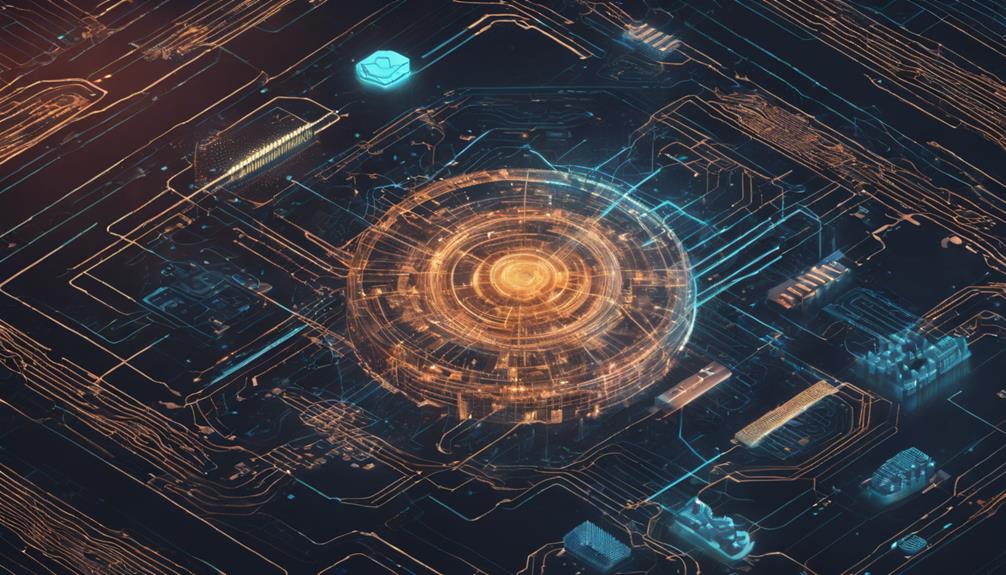
In the domain of AI-driven cybersecurity, the focus is shifting towards improving threat detection capabilities and automating incident response mechanisms.
Anticipate advancements in AI technologies that will enable quicker identification of potential security breaches and more efficient handling of cyber incidents.
Embracing these trends will empower organizations to proactively safeguard their systems and data against evolving cyber threats in the digital landscape of 2023 and beyond.
AI Threat Detection
With the integration of AI models for analysis and threat identification, the future of AI threat detection in cybersecurity is poised for significant advancement. As malicious cyber threats continue to grow in complexity, the use of AI in detecting these threats is becoming increasingly crucial.
AI-powered security controls can monitor network security in real-time, analyzing vast amounts of data using Large Language models to identify potential risks proactively. These AI algorithms are designed to adapt and evolve, keeping pace with the ever-changing threat landscape.
By leveraging AI-driven threat detection tools, organizations can strengthen their security postures and respond to threats faster, mitigating the impact of cyberattacks. The sophistication of AI in threat detection empowers organizations to stay ahead of cybercriminals, providing predictive insights and enabling automated responses to safeguard critical assets effectively.
Embracing AI in cybersecurity is not just a trend but a strategic necessity in combating the evolving cybersecurity threats of tomorrow.
Automated Incident Response
The evolution of AI in cybersecurity extends beyond threat detection to encompass the increasingly prevalent domain of automated incident response, marking a pivotal shift towards proactive defense strategies in 2023.
AI-driven automated incident response systems leverage advanced machine learning algorithms to swiftly identify and address cyber threats in real-time. By continuously analyzing patterns and anomalies in network traffic, these systems can mitigate security incidents efficiently. Not only do they enhance cybersecurity operations by reducing response times, but they also minimize human errors that can occur during manual intervention.
The future trend of AI in incident response emphasizes proactive threat detection, enabling automated remediation actions to be taken promptly. Embracing automated incident response not only streamlines security processes but also fortifies defenses against evolving cyber threats.
As organizations navigate the complex cybersecurity landscape, integrating AI-driven automated incident response solutions is becoming increasingly essential to safeguarding sensitive data and maintaining robust security postures.
Frequently Asked Questions
What Is the Future of AI in Cybersecurity?
The future of AI in cybersecurity entails increased reliance on advanced technologies for threat detection, response automation, and enhanced security analysis. Organizations are leveraging AI-powered solutions to bolster defenses, improve incident response, and fortify cyber resilience.
What Is the Future of Cybersecurity in 2023?
In 2023, cybersecurity faces escalating ransomware threats and sophisticated social engineering tactics. Legacy systems like VPNs struggle against expanding attack surfaces, pushing organizations towards Zero Trust architecture. Modernization is essential for staying ahead in cybersecurity.
Is AI Going to Replace Cyber Security?
AI is not poised to replace cybersecurity professionals; instead, it serves to enhance their capabilities. AI augments security measures by automating tasks, analyzing data, and detecting anomalies, but human expertise remains essential for effective decision-making and holistic cyber defense strategies.
How Is AI Being Used in Cybersecurity?
AI is being utilized in cybersecurity to swiftly detect abnormalities, alerting teams to potential threats, and improving security posture through historical data analysis. It enhances governance by addressing cyber threats in real-time with speed and accuracy.
Conclusion
In summary, the future of AI in cybersecurity holds great promise, with advancements in:
- Threat detection
- Ransomware tactics
- Data protection measures
As we continue to evolve our security solutions, integrating:
- Zero trust architecture
- Addressing third-party risks
will be vital.
The rise of AI-driven solutions will revolutionize the industry, offering enhanced protection against cyber threats.
With these trends in mind, the cybersecurity landscape in 2023 will be more robust and secure than ever before.
